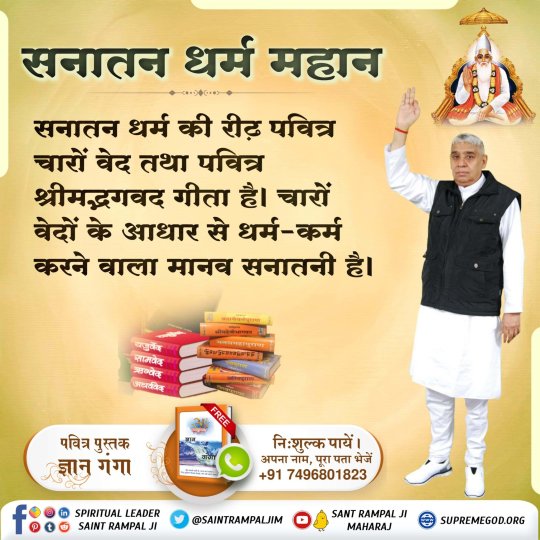#yajurveda
Text
What is the purpose of chanting mantras in Hinduism?
To connect with the divine. Mantras are frequently visible as sacred sounds that may assist to attach the practitioner with the divine. When chanted with focus and attention, mantras can assist to quiet the mind and open the coronary heart, taking into consideration a deeper revel in of oneness with the divine.
To invoke a deity or energy. Mantras also can be used to invoke a selected deity or electricity. For instance, the mantra "Om Namah Shivaya" is frequently used to invoke the Hindu god Shiva. When chanted with the proper purpose, mantras can assist to deliver the practitioner into alignment with the characteristics and energies of the deity or power being invoked.
To create wonderful change. Mantras can also be used to create effective alternate in the practitioner's lifestyles. For example, the mantra "Om Shanti" is often used to convey peace and calmness to the mind. When chanted often, mantras can help to promote superb qualities such as love, compassion, and know-how.
To heal the frame and thoughts. Mantras have also been proven to have a advantageous effect on the frame and mind. For example, chanting mantras can assist to reduce stress, improve awareness, and improve the immune gadget. In some instances, mantras have even been used to help people heal from bodily and emotional ailments.
#vedic astrology#vedanta#vedas#rigveda#yajurveda#rg veda#veda#Vedic Jyotish Online#mantra#vedic mantra#spiritual enlightment#spirituality#spiritual development#spiritualawakening#enlightenment#enlightenedconsciousness#enlightenyourself#enlightenedbeings#mythology#hindu mythology#indian mythology#classical mythology#vedic mythology
59 notes
·
View notes
Photo

New Post has been published on https://www.knewtoday.net/the-vedas-sacred-scriptures-of-hinduism/
The Vedas: Sacred Scriptures of Hinduism

The Vedas are the ancient and revered scriptures of Hinduism, embodying the spiritual wisdom and religious practices of the ancient Indian civilization. Composed in Vedic Sanskrit, these texts have been passed down through generations for thousands of years and continue to hold immense significance in Hindu religious and philosophical traditions.
The word “Veda” originates from the Sanskrit root “vid,” which means knowledge or wisdom. Thus, the Vedas are often regarded as a divine revelation, representing the profound insights and eternal truths perceived by ancient seers and sages.
Believed to have been composed between 1500 and 500 BCE, though their oral tradition may extend even further back in time, the Vedas consist of four main collections known as Samhitas. These collections are the Rigveda, Yajurveda, Samaveda, and Atharvaveda. Each Samhita serves a distinct purpose, encompassing hymns, prayers, rituals, and philosophical discourses.
The Rigveda, the oldest and most significant of the four, contains hymns dedicated to various deities, celebrating cosmic forces and natural phenomena. It offers a glimpse into the religious and social life of the ancient Vedic society.
The Yajurveda focuses on the performance of rituals and sacrifices, providing detailed instructions and verses to guide priests during religious ceremonies. It emphasizes the importance of correct recitation and the proper execution of rituals for spiritual attainment.
The Samaveda centers around melodies and chants derived from the Rigveda. It is primarily concerned with the musical aspects of rituals, elucidating the power of sound and rhythm in invoking divine energies.
The Atharvaveda encompasses a diverse range of hymns, spells, and incantations. It addresses practical aspects of life, including healing, protection, and averting misfortunes. It also delves into philosophical and ethical teachings.
Additionally, the Vedas comprise supplementary texts known as Brahmanas, Aranyakas, and Upanishads. The Brahmanas provide ritualistic explanations, the Aranyakas serve as texts for hermits and seekers in forest retreats, while the Upanishads delve into profound metaphysical and spiritual concepts, exploring the nature of reality, self, and ultimate truth.
The Vedas hold a central position in Hinduism and are regarded as the foundational scriptures upon which the diverse branches and philosophies of Hindu thought have been built. They have influenced religious rituals, philosophical schools, and ethical principles throughout history, shaping the religious practices and beliefs followed by millions of Hindus worldwide.
Today, the Vedas continue to inspire seekers of wisdom, offering profound insights into the nature of existence and guiding individuals on their spiritual journeys. They stand as a testament to the ancient heritage and rich spiritual legacy of Hinduism, inviting contemplation, devotion, and the pursuit of eternal truth.
Rigveda
The Rigveda is the oldest and most important collection within the Vedas, consisting of hymns and prayers composed in Vedic Sanskrit. It is considered one of the oldest religious texts in the world, with origins dating back more than 3,500 years ago.
Structure and Contents:
The Rigveda is divided into ten books, known as Mandalas, and contains a total of 1,028 hymns, or Suktas, attributed to different sages and seers known as rishis. These hymns are addressed to various deities, such as Agni (the god of fire), Indra (the king of gods and the god of thunder and war), Varuna (the god of cosmic order and justice), and many others.
The hymns in the Rigveda are written in poetic and metaphorical language, often using intricate metaphors, symbolism, and allegories. They express deep reverence for nature, cosmic forces, and the divine, seeking blessings, protection, and guidance from the gods.
Themes and Significance:
The Rigveda covers a wide range of themes and topics, including creation myths, praises to the gods, nature worship, cosmology, ethical values, social order, and the importance of rituals. It reflects the religious and social practices of Vedic society, providing insights into their beliefs, rituals, and worldview.
The hymns of the Rigveda offer a glimpse into the religious and spiritual experiences of the ancient Vedic seers. They express a sense of wonder and awe towards the natural world, seeking to understand the mysteries of existence and the relationship between humanity and the divine.
Philosophical Teachings:
While the Rigveda is primarily a collection of hymns, it also contains philosophical insights and contemplative reflections. Some hymns explore the nature of reality, the concept of Brahman (the ultimate reality), and the pursuit of knowledge and truth. They discuss philosophical questions regarding the origins of the universe, the nature of existence, and the purpose of human life.
Influence:
The Rigveda has had a profound influence on Hindu religious, social, and cultural practices. Its hymns and rituals form the foundation of the Vedic sacrificial ceremonies and have shaped the development of Hinduism over the centuries. The concepts and ideas found in the Rigveda have influenced subsequent Hindu scriptures, philosophical schools, and religious practices.
The Rigveda is not only a religious text but also a significant literary and historical document. It provides valuable insights into the early Vedic civilization, its language, social structure, and religious practices. Scholars and researchers continue to study and interpret the Rigveda to deepen their understanding of ancient Indian culture and religious traditions.
Overall, the Rigveda stands as a testament to the ancient wisdom, poetic brilliance, and spiritual quest of the Vedic seers, offering a profound glimpse into the religious and philosophical thought of the time and contributing to the rich tapestry of Hindu spirituality.
Yajurveda
The Yajurveda is one of the four main collections of the Vedas, the ancient scriptures of Hinduism. It is primarily focused on the performance of rituals and sacrifices, providing instructions, formulas, and verses for priests to follow during religious ceremonies. The Yajurveda is written in Vedic Sanskrit and is considered a crucial guidebook for priests or “yajurvedis” to carry out sacrificial rites.
Structure and Contents:
The Yajurveda is divided into two main branches or versions: the Krishna Yajurveda (Black Yajurveda) and the Shukla Yajurveda (White Yajurveda). The Krishna Yajurveda contains prose and verse portions mixed together, while the Shukla Yajurveda consists primarily of prose sections. Both versions contain rituals and formulas for the performance of sacrifices, but they differ in arrangement and presentation.
The Yajurveda contains hymns and mantras, referred to as “Yajus,” which are recited during various stages of sacrificial rituals. These mantras are precise and formulaic, serving as instructions for the priests regarding the actions to be taken, the offerings to be made, and the recitation of prayers and invocations.
Themes and Significance:
The Yajurveda emphasizes the importance of correct pronunciation and the precise execution of rituals. It provides detailed descriptions of various rituals, including the preparation of altars, the kindling of sacred fires, the offering of oblations, and the chanting of specific mantras. The rituals outlined in the Yajurveda were performed as acts of devotion, seeking blessings, and establishing a harmonious relationship between humans and deities.
The Yajurveda also contains philosophical and moral teachings. It emphasizes the interconnectedness of all beings and the importance of living in harmony with the natural and cosmic order. It highlights the concept of dharma (righteousness) and encourages ethical conduct, social responsibility, and spiritual growth.
Influence:
The Yajurveda has played a significant role in shaping Hindu religious practices and rituals. It served as a practical guide for priests in performing sacrifices and ceremonies, ensuring that rituals were carried out with precision and adherence to tradition.
While the Yajurveda is primarily concerned with rituals, it also contains philosophical insights and contemplations on the nature of the universe, the relationship between the divine and the mortal, and the pursuit of spiritual enlightenment. These philosophical aspects have contributed to the development of Hindu philosophy and provided a foundation for later texts, such as the Upanishads.
The teachings of the Yajurveda continue to be influential in contemporary Hindu rituals, especially in the performance of religious ceremonies, including marriages, fire sacrifices, and other religious rites. Its mantras and rituals are still recited and followed by priests and practitioners in traditional Vedic ceremonies.
In summary, the Yajurveda is a crucial Vedic text that provides detailed instructions and formulas for performing rituals and sacrifices. It holds significance in preserving ancient Vedic traditions, promoting ethical values, and guiding practitioners in their spiritual journey and devotion to the divine.
Samaveda
The Samaveda is one of the four main collections of the Vedas, the ancient scriptures of Hinduism. It is primarily focused on the musical aspects of rituals and sacrifices, containing a collection of melodies and chants derived from the Rigveda. The Samaveda is written in Vedic Sanskrit and is considered the earliest known musical text in the world.
Structure and Contents:
The Samaveda consists of a compilation of melodies and chants, known as Samans, which were sung during Vedic rituals. These chants are derived from the hymns of the Rigveda but are set to melodic patterns and rhythms. The melodies were sung by a group of priests called the Samavedins, who were responsible for the musical aspects of the rituals.
The Samaveda is organized into two main sections: the Purvarchika (First Archika) and the Uttararchika (Later Archika). The Purvarchika contains melodies from the Rigveda, while the Uttararchika comprises additional melodies specific to the Samaveda. Each section is further divided into chapters and subsections.
Themes and Significance:
The Samaveda places great importance on the musical recitation of the Vedic hymns. It focuses on the precise chanting of the mantras, the correct pronunciation of syllables, and the modulation of the voice to create a melodic and rhythmic flow. The melodies and chants of the Samaveda were believed to have a profound impact on the mind, invoking specific energies and facilitating the connection between humans and the divine.
The Samaveda also highlights the power of sound and its ability to evoke spiritual experiences. It emphasizes the concept of Nada Brahman, the divine essence manifesting as sound vibrations. The Samaveda recognizes that the musical recitation of the Vedic hymns can lead to a transcendental experience, helping individuals attune themselves to cosmic harmony and experience a sense of unity with the divine.
Influence:
The Samaveda has had a significant influence on the development of Indian classical music and its spiritual dimension. The musical patterns and techniques found in the Samaveda served as the foundation for the melodic structures and ragas in Indian classical music. The concept of using sound as a means of spiritual elevation and self-realization is a core principle in Indian music and can be traced back to the Samaveda.
The Samaveda’s emphasis on the power of sound and its connection to the divine has also influenced the practice of chanting and mantra recitation in Hinduism. Chanting sacred verses and mantras is considered a potent spiritual practice, believed to have transformative effects on the mind, body, and spirit.
While the Samaveda may not be as widely studied or practiced as the other Vedas, its musical and spiritual legacy continues to resonate in Hindu traditions. Its melodies and chants are occasionally performed in religious ceremonies and festivals, preserving the ancient musical heritage and the profound spiritual significance of sound in the Vedic tradition.
In summary, the Samaveda is a Vedic text dedicated to the musical recitation of Vedic hymns. It highlights the power of sound, melodies, and chants to create a sacred atmosphere and facilitate a connection with the divine. Its influence can be seen in the development of Indian classical music and the continued practice of chanting in Hindu rituals and spiritual disciplines.
Atharvaveda
The Atharvaveda is one of the four main collections of the Vedas, the ancient scriptures of Hinduism. It is distinct from the other Vedas in terms of its content and style. While the other three Vedas (Rigveda, Yajurveda, and Samaveda) primarily focus on hymns, rituals, and chants, the Atharvaveda includes a compilation of hymns, spells, and incantations for practical purposes.
Structure and Contents: The Atharvaveda is divided into twenty books, known as Kandas, and contains a total of 730 hymns or Suktas. These hymns are attributed to various rishis (seers) and are written in Vedic Sanskrit. The Atharvaveda is believed to be a later addition to the Vedic texts, likely composed around 1000 BCE.
Unlike the other Vedas, the Atharvaveda incorporates a broader range of topics and addresses practical aspects of life. It includes hymns and spells for healing, protection, exorcism, fertility, prosperity, and averting misfortunes. The hymns also touch upon social and ethical issues, as well as philosophical and metaphysical themes.
Themes and Significance: The Atharvaveda encompasses a diverse array of themes and rituals. Some of the prominent themes found within the Atharvaveda include:
Healing and Medicine: The Atharvaveda contains numerous hymns and spells for healing ailments, both physical and mental. It includes prayers and incantations for curing diseases, invoking the healing powers of various deities and natural elements.
Protection and Averting Evil: The Atharvaveda includes spells and rituals for protection against evil forces, black magic, and negative energies. These hymns and incantations aim to shield individuals, homes, and communities from harm and ill fortune.
Social and Domestic Life: The Atharvaveda addresses various aspects of domestic and social life. It provides guidance on marital relationships, childbirth, family harmony, agriculture, and general well-being.
Ethical and Philosophical Teachings: Alongside the practical spells and rituals, the Atharvaveda includes hymns that explore ethical values, righteous conduct, and philosophical reflections. It delves into the nature of reality, the meaning of life, and the pursuit of spiritual knowledge.
Influence:
Atharvaveda’s practical approach and focus on everyday concerns have made it relevant in diverse aspects of Hindu culture and society. Its spells and rituals are still practiced by certain communities and individuals seeking remedies, healing, and protection. Some of the practices and beliefs associated with traditional folk medicine and folk rituals in India can be traced back to the Atharvaveda.
The philosophical and ethical teachings found within the Atharvaveda have also contributed to the development of Hindu thought and spirituality. The ethical principles and reflections on the nature of existence continue to inspire philosophical inquiry and spiritual contemplation.
While the Atharvaveda is sometimes considered distinct from the other Vedas due to its content and style, it remains an essential part of the Vedic tradition. Its inclusion in the Vedas testifies to the rich and diverse tapestry of ancient Indian wisdom and showcases the practical and spiritual dimensions of Vedic knowledge.
In summary, the Atharvaveda stands apart from the other Vedas with its hymns, spells, and incantations for practical purposes. It addresses healing, protection, social life, and philosophical reflections. The Atharvaveda’s influence can be seen in healing practices, rituals, and philosophical contemplations that continue to resonate in Hindu culture and spirituality.
#AncientIndianCivilization#Atharvaveda#Hinduism#HinduTraditions#Philosophy#ReligiousTexts#Rigveda#Rituals#SacredScriptures#Samaveda#SpiritualWisdom#Vedas#VedicSanskrit#Yajurveda
2 notes
·
View notes
Text

God is in form and a human like body - Yajurveda, Chapter -5, Mantra-1
#yajurved#yajurveda#vedas#mantra#godmorningsunday#God#god_is_in_form#god_is_good#spirituality#devotional#devote#salvation#mukti
0 notes
Text
Vedic Literature » Veda, Upanishads, Vedang, Puran, Ramayan
Vedic Literature » Veda, Aranyak, Upanishads, Vedang, Puran, Ramayan
Vedic Literature » Veda, Aranyak, Upanishads, Vedang, Puran, Ramayan
Rigveda
Veda Means Knowledge. It Shows The Arrival And Settlement Of Aryans.
Rigveda Has 10 Mandalas, 1028 Verses (1017 Suktas And 11 Valakhilyas) And About 10,600 Mantras.
The Rigveda Contains A Compilation Of Prayers Composed In The Memory Of Gods Like…
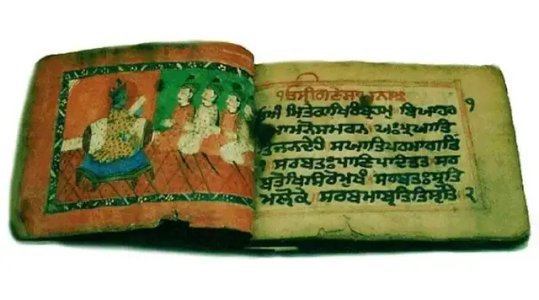
View On WordPress
#Aranyak#Atharvaveda#Brahmin#Mahabharat#Puran#Puranas#Ramayan#Ramayana#Rigveda#Samaveda#Upanishads#Upveda#Ved#Vedang#Vedic Literature#Yajurveda
0 notes
Text
Yajurveda (यजुर्वेद) | Hindi Book Store | Ved Rishi
Buy Online Yajurveda / यजुर्वेद (हिन्दी भाष्य सहित) in Rs.875. Author: Swami Dayanand Sarswati (स्वामी दयानन्द सरस्वती ) - Online Hindi Book Store.
https://vedrishi.com/book/yajurveda/
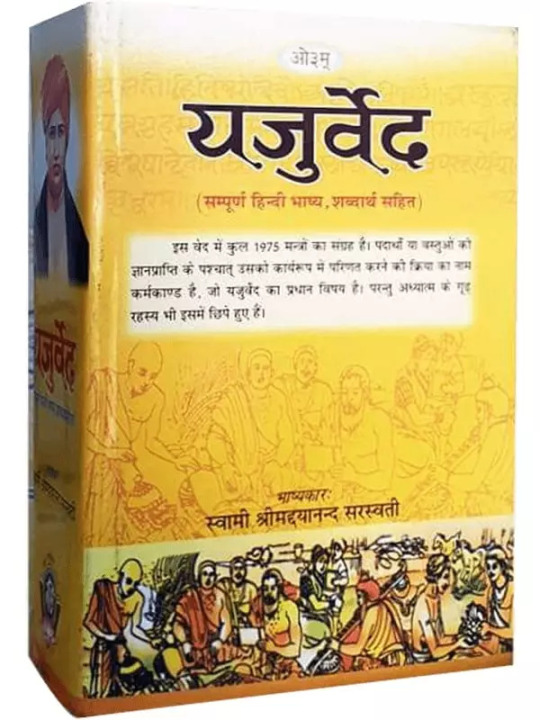
1 note
·
View note
Text
रुद्राभिषेक और रुद्र सूक्त
#Blog रुद्राभिषेक और रुद्र सूक्त
भला हो कल के प्रदोष काल के रुद्राभिषेक का। मुझे बिना कुछ किये पण्डिज्जी लोगों के साथ पहले भोजन कराया गया। पांच सौ रुपये की दक्षिणा भी मिली (जो मैंने पूरी निष्ठा से अपनी पत्नीजी को दे दी!)
कल शाम शिवाला पर रुद्राभिषेक था। सावन, सोमवार और प्रदोष काल – इनमें रुद्राभिषेक का महत्व है। सभी मनोकामनायें पूर्ण होती हैं। घोर संकट टल जाते हैं। अटका हुआ शादी व्याह सुगम हो जाता है। जो, करा रहे थे, उन्हें यह सब अभीष्ट रहा होगा। मुझे तो हाजिरी लगानी थी।
आजकल मेरी एकाग्रता में बहुत कमी दिख रही है। कोई पुस्तक 10-20 मिनट से ज्यादा एक ��ाथ नहीं पढ़ पा रहा। लिखने में भी लैपटॉप पर बैठना भारी पड़ रहा है।…

View On WordPress
0 notes
Text
#yajur #veda #sukla #upanishad #upanishads #invocation #peace #chant
YAJUR VEDA (Sukla) Upanishad Invocation & Peace Chant
https://youtube.com/shorts/GTWOcArMnIM?feature=share
#hinduism#munindra#english#rhyme#sanatan#dharma#munindramisra#books#upanishad#veda#yajurveda#sukla#invocation#peace#chant
0 notes
Text
Understanding the Role of Yajurveda in Vedic Traditions
📚 Explore the captivating role of Yajurveda in Vedic traditions! Unveil the wisdom, rituals, and spiritual significance hidden within its verses. 🕉️✨
0 notes
Photo

Every year, Mahamari, Parashakti, Prakriti - Herself observes the Pacchai Pattini Vratham, purifying not only the entire Prakriti, but also offering us the opportunity to purity ourselves along with Her. Register for Paccha Pattini Vratham now: https://events.kailaasa.org/ppv/ #mariamman #vrat #fastinglifestyle #fasting #hinduism #hindus #kundalinienergy #cosmicenergy #cosmicconnection #hindugoddess #spirituality #vedas #rigveda #yajurveda (at San Diego, California) https://www.instagram.com/p/CpxnS2HrciD/?igshid=NGJjMDIxMWI=
#mariamman#vrat#fastinglifestyle#fasting#hinduism#hindus#kundalinienergy#cosmicenergy#cosmicconnection#hindugoddess#spirituality#vedas#rigveda#yajurveda
0 notes
Photo

महामृत्युंजयमंत्र / महामृत्युञ्जयमन्त्र Mahāmṛtyuṃjaya Mantra / Mahāmṛtyuñjaya Mantra A great #deathdefeating #mantra also known as the #rudramantra or #tryambakammantra, is a verse of the #rigveda and also recurs in the #yajurveda. There are three interesting stories in connection with the origin of the #mahamrityunjayamantra. 1. The most common one is connected to #rishimarkandeya. As a child, he was advised to pray to #lordshiva to prevent his premature death and during the course of worship, Lord Shiva revealed this mantra to him. 2. Another story is in relation to #shukracharya, the spiritual master of the demons. Lord Shiva is said to have revealed this mantra to him. 3. Another narration relates to the part of Rigveda where a portion is said to have been composed by #maharishivashishtha and hence attributed to him. It is said that the #mahamrityunjaya mantra is formed after completing the #mrityunjaya mantra with #bija, #kilaka and #shaktimantras and the three #vyahrtis of #brahmagayatrimantra as per #shivapurana and #markandeyapurana. ॐ त्र्यम्बकं यजामहे सुगन्धिं पुष्टिवर्धनम् । उर्वारुकमिव बन्धनान् मृत्योर्मुक्षीय माऽमृतात् ।। oṃ tryámbakaṃ yajāmahe sugandhíṃ puṣṭi-vardhánam। urvārukam íva bandhánān mṛtyor mukṣīya mā 'mṛtā́t।। ॐ हौं जूं सः ॐ भूर्भुवः स्वः ॐ त्र्यम्बकं यजामहे सुगन्धिं पुष्टिवर्धनम्। उर्वारुकमिव बन्धनान् मृत्योर्मुक्षीय मामृतात् ॐ स्वः भुवः भूः ॐ सः जूं हौं ॐ।। oṃ hauṃ jūṃ saḥ oṃ bhūrbhuvaḥ svaḥ oṃ tryambakaṃ yajāmahe sugandhiṃ puṣṭi-vardhanam। urvārukamiva bandhanān mṛtyor mukṣīya mā mṛtāt oṃ svaḥ bhuvaḥ bhūḥ oṃ saḥ jūṃ hauṃ oṃ।। ••• Artwork: Shri Mahaveer Swami (@artistmahaveerswami) Source: @resanskrit | @indianexpress - Saumyaa Vardhan (@firepowersv) 🍃 #shivratrispecial 🍃 (at Mahaveer Swami Shilpshala) https://www.instagram.com/p/ComktLpSQWT/?igshid=NGJjMDIxMWI=
#deathdefeating#mantra#rudramantra#tryambakammantra#rigveda#yajurveda#mahamrityunjayamantra#rishimarkandeya#lordshiva#shukracharya#maharishivashishtha#mahamrityunjaya#mrityunjaya#bija#kilaka#shaktimantras#vyahrtis#brahmagayatrimantra#shivapurana#markandeyapurana#shivratrispecial
1 note
·
View note
Text
Life Lessons from Mahabharat
That life isn’t fair to anyone
Karna was neglected the moment he was born from his birth right. He was humiliated because of the status he was adopted into, despite being a Prince. He told this to Krishna who replied by reminding him how his uncle was wanting to kill him before his life even begin, how he was separated from his parents the moment he was born. Everybody in life has challenges, and we can’t escape it.
Having a lot of everything can be dangerous
Gandhari had 100 sons, but being blind-folded she not only captured herself from the outer world, but also prevented herself from the upbringing of her children. She wanted more then she could handle. Draupadi possessed immense beauty, reason why men lusted for her. Draupadi wished for an husband that had wisdom and moral values, will be strong and well built, a good archer, handsome and intelligent. Not found in one man, she was granted 5 husbands that all individually possessed these qualities, all who failed to protect her from her humiliation in the dice game.
Revenge isn’t always the answer
Shakuni revenged to destroy Hastinapur, in answer to his sister’s marriage to a blind man. His revenge was a astronomical reason for Mahabharat. At the end he died, and left his sister childless. Drupada sought for revenge on Drona when the later attacked him with the help of Kuru Princes and snatched half of his Kingdom. He performed a Great Sacrifice to obtain a son who could slay Drona and a Daughter who could enter Kuru Clan - He lost his sons in the great war and met death in the hands of Drona.
Half Knowledge is more dangerous
Arjuna's son Abhimanyu teaches us how half-knowledge can have an adverse impact. While Abhimanyu knew how to enter the Chkaravyuh, he did not know the way out.
Loyal Friends can take you places
The Pandavas had Lord Krishna, and the Kauravas had Karna. Both of them always backed the two parties, no matter what. In fact, Duryodhan was really weak without Karna.
You cannot be stopped if you are passionate about what you do.
Eklavya was even better than Arjun. He hid himself behind the trees and grasped everything that Drona taught Arjun. His passion for archery and hunger for knowledge made him good at archery then Arjun.
Perhaps the biggest I learnt was: It’s all about how we shape our life, it’s our choices that shape us into becoming the best or worst version of ourself.
#mahabharata#vedas#vedic astrology#Vedic Jyotish Online#vedic astro observations#astrology numerology vedicastrology#vedicknowledge#vedicscience#rigveda#yajurveda#vedanta#rg veda#krishna#hare krishna#harekrishna#lordkrishna#lord krishna#pandava#pandav#eklavya#hindu mythology#hindu astrology#hindu vedic#hindu vedas#hinduism#hindugods
92 notes
·
View notes
Text
💠God Kabir Saheb is the destroyer of sins
It is said in Yajurveda Adhyay 8 Mantra 13 that God can destroy sin. The sins of a devotee who takes advice from Saint Rampal Ji Maharaj and lives in dignity are destroyed.
💠 Kabir Saheb is the complete God
"Kartar remained in the form of Dhanak"
Raga “Siri” Mahala 1 page 24
Nanak Dev ji says: -
God in the form of Dhanak came and showed me the right path and freed me from death.
💠 Supreme God KavirDev has come in all the four ages. Even before the creation of the creation and the Vedas, there existed a human-like being named KavirDev in the anonymous world. God Kabir then created Satlok, later created Parabrahma, the worlds of Brahm and the Vedas, hence the description of KavirDev is there in the Vedas.
💠 In Shrimad Bhagavad Gita Adhyay 8 Shlok 3
Lord Brahma, the giver of the knowledge of Gita, has said that he is the Supreme Akshar 'Brahm' who is eternally present with the living soul.
He is other than the giver of the knowledge of Param Akshar Brahm Gita, He is Supreme God Kabir.
💠 God appears in the form of a child and does leela. Then they are raised with the milk of virgin cows.
Rigveda Mandala 9 Sukta 1 Mantra 9
Supreme God Kabir himself comes and does this leela.
💠 It is said in Rigveda Mandal 9 Sukta 96 Mantra 17 that KavirDev takes the form of a child. He grows up doing leela. Because of describing philosophy through poems, he gets the title of a poet, that is, he is called a sage, a saint and a poet, in fact he is the Supreme God Kabir (Kabir Saheb).
💠 Supreme God KavirDev (God Kabir) resides in the third abode of liberation i.e. Satlok. - Rigveda
Rigveda Mandala 9 Sukta 96 Mantra 18
💠The name of God in the Holy Bible is Kabir - Job 36:5
Job 36:5 (Orthodox Jewish Bible - OJB)
God is Kabir (powerful), but He does not hate people. God is Kabir (Powerful) and Wise.
The Bible has also clarified that the name of the Lord is Kabir.
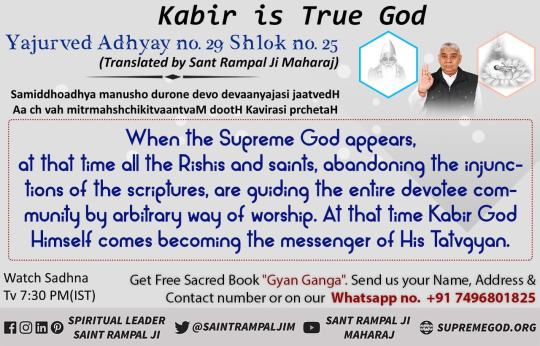
0 notes
Text
Hindu Varna system
sindhu-and-leadership-converted-1Download
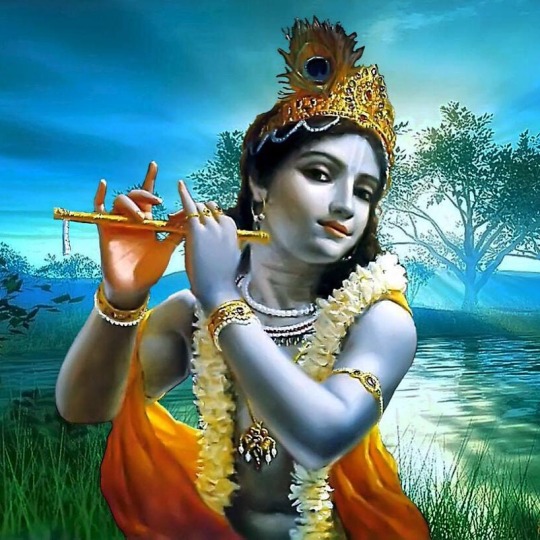
View On WordPress
#agama#ANCIENT INDIA#atharveda#BHARAT#brahmn#division of vedic literature#HINDU DHARMA#HINDUISM#HINDUISM SCRIPTURES#karma yoga#KRISHNA#RIGVED#samved#SANKHYA THEORY#vedang#WOMEN IN HINDUISM#yajurveda
0 notes
Text

0 notes
